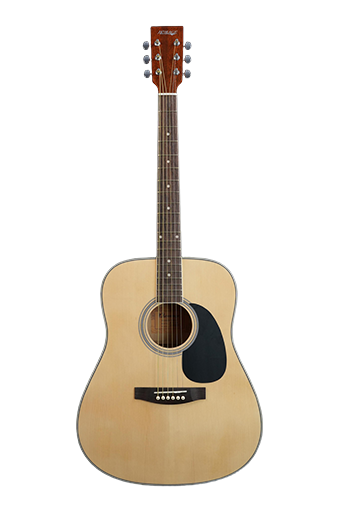
Acoustic guitar Series: When to Use Humidifiers for Your Guitar
Introduction
An acoustic guitar is a delicate instrument made primarily of wood, which is highly sensitive to changes in humidity and temperature. Proper care is essential to maintain its structural integrity, playability, and tone. One of the most critical aspects of guitar maintenance is humidity control.
This guide will explore:
- Why humidity matters for acoustic guitars
- Ideal humidity levels for guitars
- Signs your guitar needs a humidifier
- Types of guitar humidifiers
- How to use a humidifier correctly
- Seasonal considerations
- Common mistakes to avoid
By the end, you’ll understand when and how to use a humidifier to keep your guitar in top condition.
---
Why Humidity Matters for Acoustic Guitars
Wood is a hygroscopic material, meaning it absorbs and releases moisture based on environmental conditions. When humidity is too low, wood dries out and shrinks, potentially causing cracks, sharp fret ends, and a sunken top. Conversely, excessive humidity can cause swelling, warping, and glue joint failures.
Most acoustic guitars are built with a moisture content of 6-8%, which is stable in environments with 45-55% relative humidity (RH). Deviations from this range can lead to long-term damage.
Effects of Low Humidity
- Cracks in the top, back, or sides – Dry wood becomes brittle.
- Fret sprout – The fingerboard shrinks, exposing sharp fret ends.
- Action changes – The top sinks, lowering string height and causing buzzing.
- Bridge lifting – Glue joints weaken as wood contracts.
Effects of High Humidity
- Swelling and warping – The top bulges, increasing string height.
- Glue failure – Excess moisture weakens adhesive bonds.
- Mold and mildew – Can damage both wood and internal components.
---
Ideal Humidity Levels for Guitars
The 45-55% RH range is widely recommended by luthiers and guitar manufacturers. However, slight variations (40-60%) are generally safe if they remain stable.
How to Measure Humidity
- Hygrometer: A small digital hygrometer placed inside your guitar case or near your storage area provides accurate readings.
- Smart sensors: Some modern hygrometers connect to apps for real-time monitoring.
If humidity consistently falls below 40%, a humidifier is necessary. If it exceeds 60%, consider using dehumidifiers or silica gel packs.
---
Signs Your Guitar Needs a Humidifier
Before investing in a humidifier, check for these warning signs:
1. Cracks in the Wood – Small hairline cracks near the bridge or soundhole indicate dryness.
2. Sharp Fret Ends – If frets feel rough or protrude, the fingerboard has shrunk.
3. Lower String Action – A sunken top reduces neck relief, causing fret buzz.
4. Dry or Brittle Finish – The guitar’s finish may appear dull or cracked.
5. Changes in Tone – A dry guitar often sounds thin or lacks resonance.
If you notice these symptoms, humidify your guitar immediately and consult a luthier if damage is severe.
---
Types of Guitar Humidifiers
Several humidifiers are available, each with pros and cons:
1. Soundhole Humidifiers
- How it works: A sponge or gel-filled device sits inside the soundhole, releasing moisture slowly.
- Pros: Easy to use, effective for the soundboard.
- Cons: Doesn’t humidify the entire guitar; requires frequent refilling.
2. Case Humidifiers
- How it works: A sponge or humidification pack is placed inside the case (often in the headstock area).
- Pros: Maintains stable humidity for the whole guitar.
- Cons: Requires a well-sealed case; may not be sufficient in very dry climates.
3. Room Humidifiers
- How it works: A standalone humidifier regulates humidity in the entire room.
- Pros: Best for multiple guitars; maintains consistent conditions.
- Cons: More expensive; requires regular maintenance.
4. Dampit or Under-Strings Humidifiers
- How it works: A tube-like humidifier slides between strings into the guitar body.
- Pros: Directly humidifies the interior.
- Cons: Can drip if over-saturated; needs frequent checking.
---
How to Use a Humidifier Correctly
Step 1: Choose the Right Humidifier
- For individual guitars, soundhole or case humidifiers work well.
- For multiple guitars, a room humidifier is ideal.
Step 2: Monitor Humidity
- Keep a hygrometer inside the case or room.
- Check levels at least once a week (daily in extreme climates).
Step 3: Refill and Maintain
- Sponge-based humidifiers need distilled water (tap water can cause mold).
- Replace evaporative cartridges as needed.
Step 4: Avoid Over-Humidification
- Too much moisture is just as harmful as dryness.
- If humidity exceeds 60%, remove the humidifier temporarily.
---
Seasonal Considerations
Humidity fluctuates with seasons:
Winter (Low Humidity)
- Indoor heating dries the air.
- Use case humidifiers and keep guitars in their cases when not playing.
Summer (High Humidity)
- Air conditioning can help, but some regions become too humid.
- Use silica gel packs or a dehumidifier if needed.
Spring/Fall (Transition Periods)
- Monitor humidity closely as temperatures shift.
- Adjust humidifier use accordingly.
---
Common Mistakes to Avoid
1. Ignoring Humidity Until Damage Occurs – Prevention is easier than repair.
2. Using Tap Water in Humidifiers – Minerals promote mold growth.
3. Over-Humidifying – Excess moisture causes swelling and glue failure.
4. Storing Guitars Near Heat Sources – Radiators and vents accelerate drying.
5. Assuming All Cases Are Airtight – Cheap cases may not retain humidity well.
---
Conclusion
Using a humidifier is essential for protecting your acoustic guitar from environmental damage. By maintaining 45-55% RH, monitoring conditions, and choosing the right humidifier, you can prevent costly repairs and preserve your guitar’s tone and playability.
Remember:
- Check humidity regularly with a hygrometer.
- Use distilled water in sponge-based humidifiers.
- Adjust for seasonal changes to avoid extreme conditions.
With proper care, your guitar will stay in excellent condition for decades. Happy playing!

Copyright © 2003-2025 Longsheng Musical Instrument Co., Ltd. Powered by:Lucky Cloud Network Technology All rights reserved.
SitemapThis website uses cookies to ensure you get the best experience on our website.
Comment
(0)